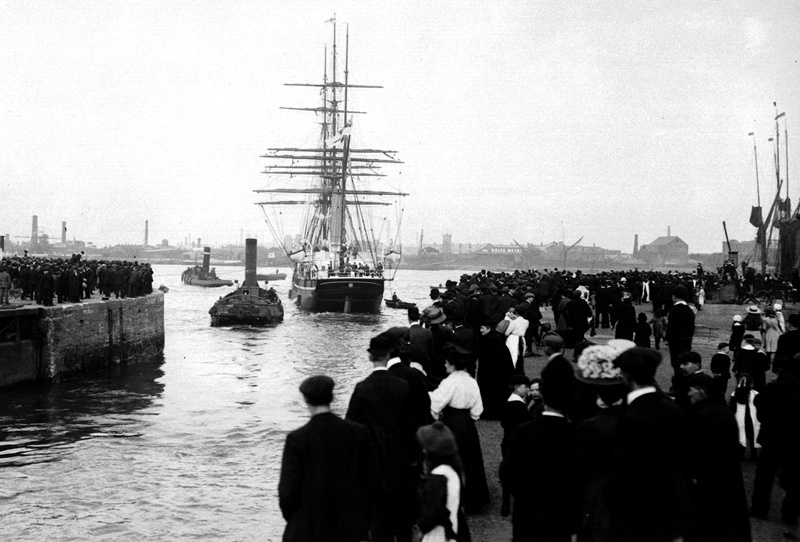Their struggle and eventual undoing at the edge of the Earth is a British cultural watermark that remains one of our ”great heroic tales” a century on.
Dr Edward Adrian Wilson and Captain Robert Falcon Scott’s voyage to the South Pole, conceived of at a lodge in the Angus Glens, ended tragically in 1912.
A 15-tonne granite statue commemorating the Terra Nova expedition now stands at the fateful mission’s spiritual home, continuing their story ”for another hundred years”.
The stone from which it is made was quarried on January 17, 100 years to the day Scott reached the South Pole.
Kirriemuir Landward East community councillors Ivan Laird and Lorna Bruce told The Courier how a small idea grew quickly.
Mr Laird said: ”The original monument was dilapidated and you couldn’t read the inscription stone and that was what we set out to replace.
”However, it was Lorna’s idea to pursue putting up something better.
”We got a price for doing the inscription and that was a as far as our budget would go.
”We formed a sub-committee of the community council called the Terra Nova Group and we got the gift of a chunk of granite and a very substantial donation, which set us on our way.
”Things came together very quickly from there, which was a surprise in this climate.”
Ms Bruce said: ”Really, we thought we might have got there by next year some time or even a long time away. Everything came together quite quickly.
”We’ve had great support through Angus Council, the environmental trust, roads, police and lots of others.”
In attendance at the Saturday ceremony were Falcon Scott and David Wilson, the explorers’ great-grandson and great-nephew, respectively.
Local dignitaries included councillors Jeanette Gaul and Bob Myles, and Depute Provost Alex King.
Retired reverend Oliver Vellacott, who lives in Burnside Lodge, made a dedication at the stone.
He told The Courier: ”It’s fitting because it (the South Pole mission) all started here with Wilson and it’s great that we got the stone up in the centenary year.”
Dr Wilson conducted a grouse study at Burnside Lodge in Glen Prosen over many months and was joined there by Captain Scott to plan the trek.
Having found they had been beaten to the pole by Roald Amundsen 33 days prior, the pair and two comrades, Henry Robertson Bowers and Lawrence Oates, died on their return journey.
Publisher Reginald Smith’s widow funded a memorial fountain at a point in Glen Prosen, known as Scott’s View.
It stood for 60 years before being destroyed in a car accident in 1979 and was replaced by a weathered cairn.
At the stone, the Rev Vellacott gave a dedication and hymn.
He said: ”This memorial is a reminder to us all of what they begat in a wider sense within the British psyche, which holds this story in its collective memory as one of the great heroic tales.
”This legacy even today constitutes an inspiration to many of our young people and, interestingly, the more so because of its tragic outcome.”
Kirriemuir sculptor and stonemason Bruce Walker made the monument, which includes life-size figures of the two men, penguins, huskies, Siberian ponies and a globe depicting their route from New Zealand to the South Pole.
